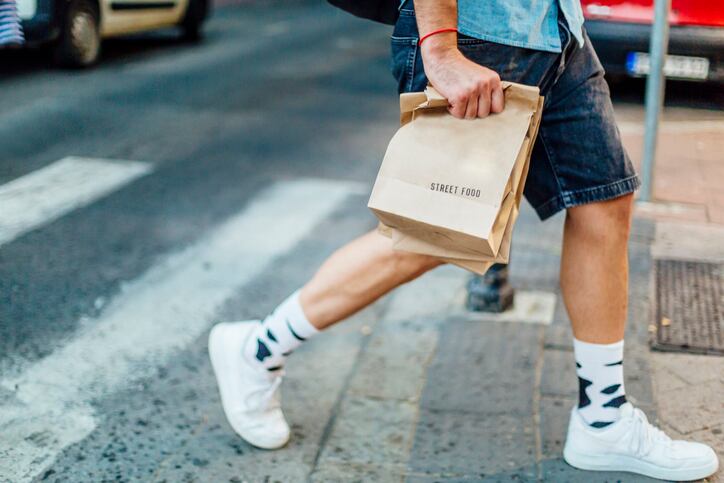According to the report, the UK food to go market is forecasted to value £22.2 billion in 2023, with a growth rate of +4.1%. The market is set to reach its highest level of outlet growth since the pandemic.
Players in the sandwich & bakery, convenience store grab & go, and fast-food sectors are capitalising on opportunities for more diverse outlets, including travel hub, FTG-focused, and drive-thru locations.
Food to go market share of the total eating out market is forecast to grow by +0.2ppts in 2023, reverting to the pre-pandemic trend of gradual growth, underpinned by consumers' enduring appetite for food on the go as well as operator product and service innovation.
The report predicts that food to go growth will outpace the total eating out market growth, and key channels, such as convenience store grab and go and coffee shops, are well placed to benefit from increased value scrutiny.
"Despite the challenges of the past two years, the food to go market has remained resilient and is poised for continued growth," said Katherine Prowse, Senior Insight Manager at Lumina Intelligence. "We expect to see continued innovation in products and services, as players look for ways to meet the changing needs and preferences of consumers."
Lumina Intelligence is owned by FoodNavigator publisher William Reed Business Media. The Lumina Intelligence Food to Go Market Report 2023 is based on consumer eating out behaviour across all UK eating and drinking out channels through the Lumina Intelligence Eating & Drinking Out Panel, with insight from 78,000 interviews each year.
Consumers trade down to retail for food on the go, but bakeries remain key
The report also revealed that bakeries are the most important sub-channel for breakfast to go, rising by +2ppts year-on-year. However, there has been a decline in routine purchases as consumers cut back to manage spend.
The report shows that travelling or commuting motivates the largest proportion of breakfast to go missions, with this mission seeing the largest growth year-on-year. Operators offering breakfast to go should target key travel hubs and ensure that service times are fast and efficient to enable consumers who are travelling or commuting to easily purchase food.
At lunch, consumers are trading down to retail, which has increased its share of occasions by +2ppts, as consumers are returning to offices and looking for inexpensive lunch options. Bakeries can capitalize on this trend by offering a variety of lunch options that are both cost-effective and substantial, such as pastries, which have also increased by +1.4ppts and +1.0ppts for lunch and snack occasions, respectively.
"This year's report clearly shows the importance of understanding consumer behaviour when it comes to food to go," said Prowse. "Operators need to be mindful of changing consumer habits and ensure they are meeting their needs and targeting key locations."
UK's food and beverage market bounces back as consumers return to pre-pandemic habits
The latest data from the Eating and Drinking Out Panel further reveals that the UK's food and beverage market is showing signs of recovery after a challenging year. The removal of coronavirus restrictions and the return of workers to offices have led to a 2% year-on-year increase in penetration, indicating that consumers are participating more in the market.
However, the frequency of occasions has remained stable year-on-year due to the rising cost of living. Inflation, rising energy costs, and the war in Ukraine have driven up food prices, resulting in an 8% year-on-year increase in average spend. As a result, consumers are turning to more affordable options when eating out, which has led to spend increases that are behind inflation levels.
Consumers' priorities have shifted towards socializing, resulting in a 3-percentage-point year-on-year increase in pubs and bars' share of occasions. The data also shows that occasions where consumers were purchasing chips grew by 2.4%, and burgers by 1.8%, as consumers purchased pub classics.
"We are delighted to see that the UK's food and beverage market is showing signs of recovery after a challenging year. With the easing of COVID fears, consumers are returning to pre-pandemic behaviours, which is resulting in an increase in the penetration within the market," said Sorcha Simons, Insights Manager at Lumina Intelligence.
However, QSR (quick-service restaurant) occasions have declined year-on-year following increased demand for delivered channels during the pandemic.





